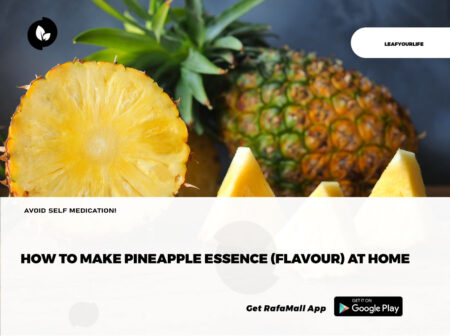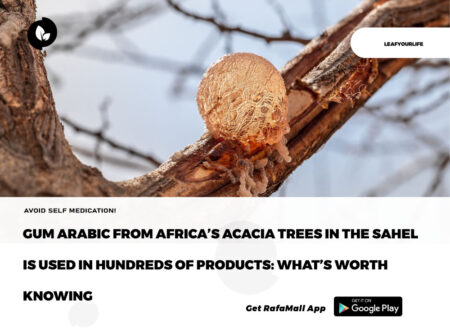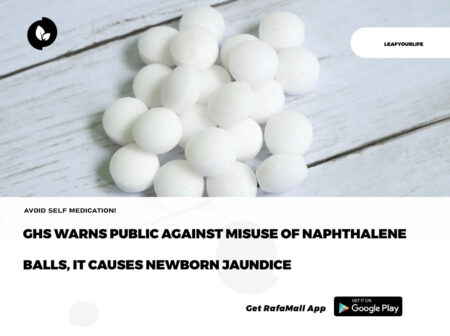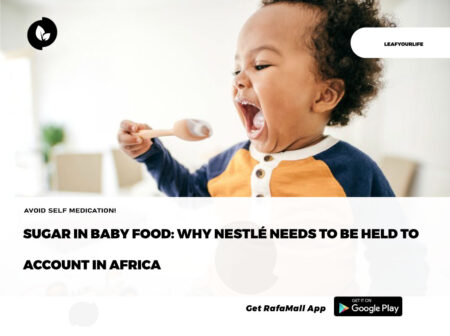Ever wondered why bananas are one of the most popular fruits out there? It’s rare to go into a supermarket’s fruit section and not see a display dedicated specifically to them. This is because not only are they delicious, but they’re also extremely healthy while being one of the many fiber-rich fruits out there.
Bananas are a great source of:
- B Vitamins
- Potassium
- Vitamin C
- Magnesium
Bananas are the world’s most ubiquitous fruit and their history is long-standing, indicating the fruit’s resilience and popularity among all the countries in the world. It’s a common belief that this fruit originated in Southeast Asia somewhere around 8000 and 5000 BC. From there it traveled west with the help of Arab conquerors and then further to the New World, carried by explorers and missionaries. Bananas are now the world’s fourth-most valuable food crop in the world, with wheat, rice and milk still going strong in the top three.
Where are bananas grown?
As a tropical fruit, the banana plant thrives in the southern hemisphere, although the banana industry does extend to countries further north where temperatures are sufficiently high. Banana production is biggest in India, where almost 30 million tons are produced by banana farmers each year. That’s more than twice that of the second country in the list, China. The Musa Acuminata banana tree is one of the most prominent you’ll find in a banana plantation in south east Asia, producing many of the edible bananas enjoyed around the world. Globally, banana producers grow over 110 million tons of the fruit each year.
What Types of Bananas Are There?
Ever since they appeared, bananas have found ways to develop and mutate into over 1,000 different types, out of which about half are inedible. The most popular types of bananas you’ll find though are:
Cavendish Bananas – these bananas are the only ones with a true global reach and the ones you can typically expect to find in any supermarket from across the globe. The Cavendish banana was first propagated in 1834 by Duke by Duke George William Spencer Cavendish who gave it its name.
- Cavendish Bananas
These bananas are the only ones with a true global reach and the ones you can typically expect to find in any supermarket from across the globe. The Cavendish banana was first propagated in 1834 by Duke by Duke George William Spencer Cavendish who gave it its name.
Cavendish Bananas
- Red Bananas
They have a reddish-purple skin and their taste resembles that of raspberries, making them absolutely delicious.
Red Bananas
- Lady Finger Bananas
At about three inches in size, they are also known as baby bananas, since they are smaller and sweeter than the Cavendish variety.
Lady Finger Banana
- Pisang Raja
These bananas are popular in Indonesia. They’re a bit smaller than the Cavendish ones and they taste like honey-flavored custard with a rich consistency.
Musa Raja Pisang Banana Tre
- Plantains
These are another famous type of bananas, rich in starch, not typically consumed raw, but rather used in delicious dishes.
Another name for a plantain is a dessert banana, as they are often used as an ingredient for sweet recipes.
Fresh Whole Plantains
- Burro Bananas
These are some of the most unique bananas out there, since their taste is tangy and lemony. They are flatter and smaller than your typical Cavendish bananas.
Burro Bananas
- Manzano Bananas
These bananas are sweeter than the Cavendish variety and resemble a bit the taste of apples and strawberries.
Read Also
What’s In a Banana?
Bananas are among some of the most nutritious fruits out there, so let’s look at a more detailed composition of this fruit.
If you take one medium-sized banana (100 g), you can expect to benefit from:
- 1.1 grams of protein
- 12.2 grams of sugar
- 22.8 grams of carbs
- 2.6 grams of fiber
- 0.3 grams of fat
However, there are some things that change regarding the nutritional composition of a banana, in accordance to its ripening stages. For example, green bananas contain about 80% starch. This later turns into sugars and ends up amounting to less than 1% when bananas are fully ripe.
On the other hand, ripe bananas contain several types of sugar that can be classified as fructose, glucose and sucrose. To this end, bananas contain a low glycemic index of 42-58. The amount of water-soluble pectin, a dietary fiber, also increases.
An unripe banana also contains decent amounts of resistant starch, which acts as a soluble fiber, having a beneficial impact on your digestive system.
What Are the Health Benefits of Bananas?
Red Banana
As mentioned before and widely agreed upon, bananas, these incredible antioxidant fruits, are a true nutritional powerhouse. This is what makes them an important aid in preventing and treating a myriad of afflictions and diseases.
Some health benefits are a direct result of the vitamins and minerals that these bananas contain:
- B Vitamins – bananas have a high content of vitamin B6, which is great in improving mood, reducing symptoms of depression, improving brain health and they may treat anemia.
- Potassium – this is one of the body’s most important minerals. It’s great in regulating fluid levels, nerve signals and muscle contractions.
- Vitamin C – this is an essential aid in the growth, development and repair of all body tissues. It also helps form collagen, heal wounds, support the immune system and maintain the health of bones, cartilage and teeth.
- Magnesium – this mineral is great in fighting depression, lowering blood pressure, reducing insulin resistance and can help prevent migraines, among other unbeatable health benefits.
- Vitamin A – protects eye-health from age-related decline and supports a healthy immune system.
- Iron – this miracle mineral helps preserve energy levels and focus, gastrointestinal processes and the regulation of the body temperature. Iron usually works incognito in our bodies and we only start noticing its positive impact on our health only when there’s not enough of it in our system.
- Copper – this is another essential nutrient to the human body, since together with iron, it supports the body to form red blood cells. By having enough of this nutrient in your diet, you may help prevent the development of cardiovascular diseases and osteoporosis.
- Manganese – this helps reduce inflammation in the body, it may improve bone health and it plays an essential part in regulating blood sugar levels.
When generally speaking about bananas, it’s important to remember they can help with:
- Sleep and nervous system health
- Blood cell health
- More ways they can help
- More ways they can help
Physical Health Benefits of Bananas
Bananas are an excellent source of potassium, vitamins B6 and C, and magnesium. What’s not to love about them? A diet high in bananas keeps you from bruising as easily thanks to the potassium content. This combination of vitamins and minerals is hard to ignore. The nutrition facts of bananas are simply outstanding and can help with a multitude of physical problems. Here’s a list of the issues that can be fixed by increasing your daily intake of these antioxidant fruits:
Read Also
Anemia :
Thanks to bananas’ iron content; they are able to stimulate the production of hemoglobin in your blood, which is incredibly helpful to those with iron-deficiency anemia. This is preferable to taking large doses of iron supplements regularly.
Blood Pressure:
The fact that bananas are high in potassium while low in salt make them great for dealing with blood pressure issues. Because they are so efficient at this, the FDA has approved these claims so that producers of bananas can officially market their product using this information!
Banana Red
Constipation:
Why take laxatives when you can eat a fruit that has a high fiber content? Bowel problems don’t stand a chance when you involve bananas in your diet.
Hangovers:
In combination with honey, bananas can be made into a milkshake that soothes the stomach, builds up blood sugar levels (which are often depleted as a result of drinking), and re-hydrates you after a rough night.
Heartburn:
Bananas are natural antacids so you can eat some when heartburn becomes a real problem.
Morning Sickness:
Keeping blood sugar levels up reduces morning sickness while supplying nutrients to you and your baby.
Mosquito Bites:
You can rub the inside of a banana peel against your mosquito bites to reduce swelling and irritation. Banana peels are usually thrown away, so this is a good way to get some use out of them so you don’t have to buy special lotions for your insect bites.
Ulcers:
Bananas are able to neutralize the acids in your stomach, which is particularly helpful when dealing with ulcers. Other fruits are so acidic that they tend to make the problem worse. Eating bananas can actually reduce irritation because they coat the lining of your stomach while neutralizing it.
Read Also
Temperature Control:
Cultures around the world have relied on bananas to reduce body temperature in expectant mothers.
Smoking:
Bananas, due to their vitamins B6 and B12 and minerals potassium and magnesium, help the body when dealing with nicotine withdrawal, which can have rather unpleasant effects on smokers who are trying to quit.
Strokes:
The New England Journal of Medicine has published studies saying that eating bananas regularly reduces your chance of stroke by a whopping 40%.
Warts:
The inside of a banana peel, when placed on a wart and taped there for a while, can help to get rid of pesky warts. This beats using the freezing or drying out methods of most medications.
Mental Health Benefits of Bananas
Bananas also do a lot of good for your mental health. The tryptophan in bananas can make sufferers of depression feel better, as well as those with Seasonal Affective Disorder. Daily intake of bananas increases brain power, while the high vitamin B content of them reduces anxiety. People who are stressed tend to deal with a drop in potassium.
To this end, it’s important to note that potassium is actually an electrolyte that supports the health of your nerve cells, which further leads to better communication between the body’s various systems. By getting a regular intake of potassium, you can ensure nerve cellular health and a healthy nervous infrastructure throughout the body.
When it comes to the banana’s benefits in lifting your mood, the scientific process behind it all is quite intricate and beautiful: bananas also contain the amino acid tryptophan whose absorption in the brain is helped by mood-boosting carbohydrates. At the same time, vitamin B6 helps convert the tryptophan into serotonin, the well-known mood-lifting hormone . Due to this, bananas are actually recommended both in treating anxiety and depression, as well as in helping with sleep disorders.
However, this doesn’t automatically mean that if you eat one banana, your mood will be magically improved. In order for the body to produce this important hormone, additional dietary intake is required as well, especially vitamin B6. So it’s important to have a diet that actually covers your vitamin B6 needs, so that when you incorporate bananas as well, you get the full benefits of anxiety relief and mood boosting.
At the same time, this exact composition makes it highly indicated that you start eating one banana per evening if you’re suffering from insomnia. Having said this, you may want to eat one in the evening and see if your sleep-wake cycle improves.
All in all, you can confidently include bananas in your diet if you’re dealing with the negative effects of anxiety and depression. No special preparation is needed in order to consume these amazing antioxidant fruits – you can simply eat them raw as they are or include them in your morning porridge. Either way, they are easy to eat, delicious and will be digested quickly, due to their fiber content.
Insomnia and poor mood – this can be remedied by eating more bananas because they are high in the potassium mineral. When you look at bananas’ nutrition data, it’s hard not to consider them a superfruit!
How Can You Get the Most Out of Your Bananas?
There are several ways in which you can store your bananas, depending on how you prefer eating them. If you like eating them while they’re still greener and would like to store them for as long as possible, it’s indicated that you put them in the top drawer of your fridge. This way, you can still eat them and enjoy all their goodness within 1-2 weeks.
However if you’ve bought them a bit greener, but would still like them to ripen into yellow bananas, it’s indicated that you keep them from the fridge altogether. Bananas are tropical fruits, so colder temperatures can actually prevent them from reaching their most ripe form. Even if you’ve previously stored them in the fridge and then took them out, it’s possible that this may have negatively impacted their development and the bananas won’t resume their ripening process.
And of course, if you’ve left your ripe banana for a little too long and it’s turned soft and mushy, there’s always a classic banana bread to try. Don’t throw that brown banana into the garbage just yet.
Thinking about cooking with one? You can always check out antioxidant-fruits.com’s Fruit Recipe Page to find unique recipes of specific fruits found on this site.
Antioxidant-fruits.com is looking for recipes with this fruit, like:
- pudding recipe
- rum cream
- pancakes
- pudding recipe
- foster recipe
- pie recipe
- moist bread recipe
Do you have an old favorite that you’d like to submit to Antioxidant-fruits.com? They contain three natural sugars – sucrose, fructose and glucose combined with fiber. This great fruit gives an instant, sustained and substantial boost of energy
Learn more: antioxidant-fruits.com













